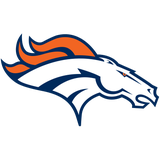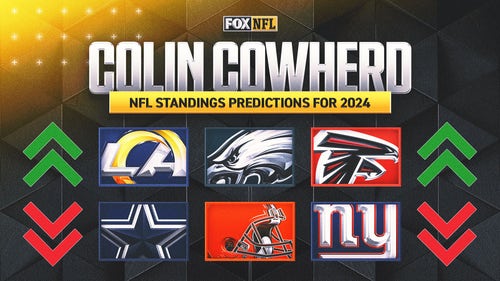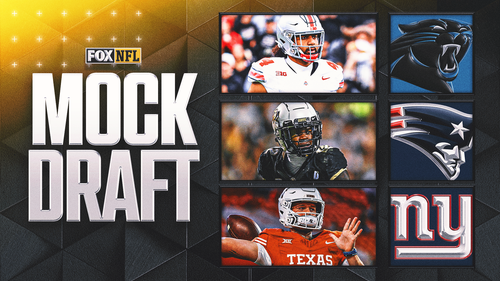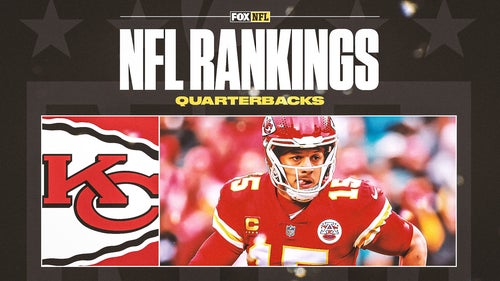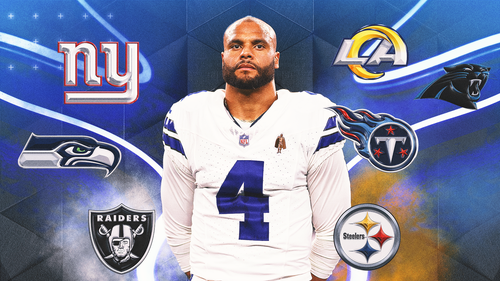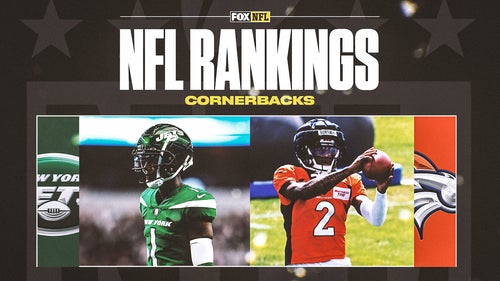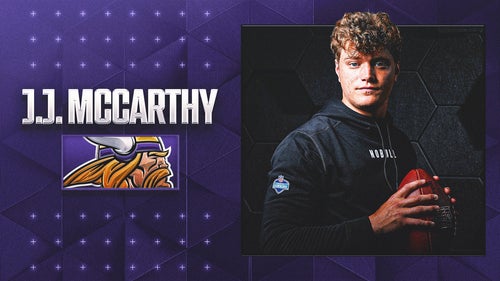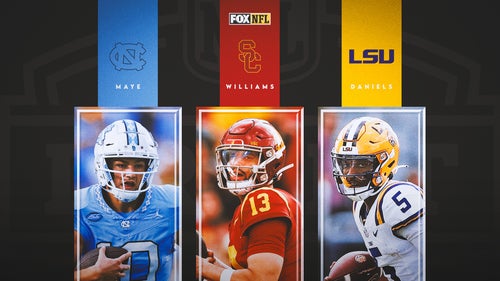
Tale of Two Cities: Denver, Seattle look different than expected

By Brady Quinn
To say that expectations were high for Seattle this season would be an understatement. You don't take a Super Bowl participant with a largely intact super-salty defense and add one of the top tight end receiving threats in football and not have sky-high expectations.
But after all that offseason hope, is Seattle’s reign in the NFC West on the ropes?
The Seahawks built their reputation on a strong running game and stingy defense, which helped them win a Super Bowl championship in back-to-back appearances. So what's to blame for their 2-4 start? Seattle is second league wide in rushing at 137 ypg, but that number is misleading because the Hawks lead the league in attempts by a wide margin and QB Russell Wilson's scrambling at over 40 ypg clouds the picture of modest running back output. With Marshawn Lynch returning to health, this is an area that could conceivably return to top-of-league normalcy.
Their offense has allowed a league-leading 26 sacks, even with Russell Wilson's special ability to allude tacklers. but he leaves the pocket with such frequency it's murky to make any conclusions about the quality of the protection from that stat alone.
The Seahawks are ranked 13th in total defense (220 passing ypg), and all seems well until you look a bit deeper. In their four losses, the Seahawks have been outscored by 38 points in the fourth quarter, which goes against head coach Pete Carroll’s belief that you win games in the fourth quarter. Their defense has allowed 100 yards a game to opposing rushers.
Simply put, this doesn't feel like the Seattle we're used to.
Under Cover
What was surprising about Sunday’s loss was that even Seattle’s beloved12th man played a role in Carolina's winning TD. In part due to the excessive crowd noise, the “Legion of Boom” was confused about which coverage they were playing. While TE Greg Olsen strolled up the seam on his way to the game-winning TD, CB Richard Sherman and S Earl Thomaswere looking at each other wondering what happened.
The Seahawks primarily play two coverages: Cover 1 (man-to-man with afree safety in the middle of the field); or Cover 3 Match (a three-deep zone coverage where defenders will take a receiver man-to-man once the receiver reaches a certain depth). They look similar, but the difference is in the way they handle the “seam.” The seam is the area between the inside edge of the numbers and the hash.
In Cover 1, there’s no thinking involved. Defenders match up man-to-man. There are a couple of ways to play Cover 3, neither of which the Seahawks did. There’s a term called “sloop and squeeze” where the CB squeezes the seam as the receiver goes vertical, like Olsen did. The underneath player in that zone then sloops outside to the numbers and even further if the QB is looking that way. The other way to play it is to have that seam defender carry the receiver vertically up the seam. This plays out very similar to Cover 1 and would look that way to most viewers.
I didn’t mention the free safety in either of these examples. The safety’s job is to midpoint vertical threats and dissuade throws in his part of the field. No vertical receiver should ever be deeper than he is. Thomas was the last line of defense in last Sunday’s game, and Olsen ran past him on that play. Thomas is one of the best in the game, so this kind of development is very much out of character.
Seattle’s two wins came against 1-5 Detroit, which likely lost that outing on the Seahawks’ “batted ball” no call that went out of the end zone, and to Chicago, which was led by backup QB Jimmy Clausen. There’s still plenty of time for Seattle to make a run at the playoffs, but my greatest concern is the Seahawks not getting home-field advantage. Home-field advantage gives Seattle a much greater probability of making another Super Bowl run.
Seattle’s two wins came against 1-5 Detroit, which likely lost that outing on the Seahawks’ “batted ball” no call that went out of the end zone, and to Chicago, which was led by backup QB Jimmy Clausen.
There’s still plenty of time for Seattle to make a run at the playoffs and it's still many of the same people who've overcome the challenges of this process before. But my greatest concern is that in the time it may take them to solve their issues, the hole they've dug themselves may cost Seattle that home-field advantage that's been so important to them in recent seasons.
What we've seen thus from Seattle is out of character, but with an opportunity and the pieces to get back in character. Time is fast-becoming Seattle's biggest foe.
Peyton's Situation Atypical of an Elite QB
Expectations in Denver are always high -- at least as high as those in Seattle. An opportunity to milk one final title run out of one of the best quarterbacks in NFL history and roster chock-full of talent will reasonably do that to any NFL city. Clearly, at 6-0 the Broncos don't have they concerns of unmet expectations as does Seattle. The questions swirling are more about the sustainability of what they've pull off so far.
After Denver’s OT win over the Cleveland Browns, a reporter asked head coach Gary Kubiak if he gave any thought to playing backup QB Brock Osweiler. Yeah. Seriously, someone who’s paid to write about football asked that question! I don’t know if he was high, given that Colorado is one of two states that allows recreational marijuana use, but it’s ridiculous to ask such a thing.
This past week came down to Peyton Manning making the throws in OT that Josh McCown didn’t. Has Manning struggled this season? Of course. He’s tied for the league lead with 10 INTs, but people act as if this has been an ongoing issue for the future Hall-of-Famer. HE THREW 39 TDs A YEAR AGO. People need to chill and understand the situation Manning is in. Let me explain...
A question loomed in my mind, "How would an elite QB like Peyton Manning handle changing systems, personnel and coaches?" It’s seldom this happens. Players of that magnitude typically remain in their draft city for their entire career or, if they do move, most teams adapt the offense to fit the quarterback’s skill-set, much like Denver did when Manning arrived in 2012. But then my question was answered. Kubiak was hired and stated that the Broncos will install the foundation of a system that will survive the Manning era, and now you’re witnessing the result. Manning is completing 61 percent of his passes, the lowest percentage since his rookie year (1998, 57 percent), with seven TDs to 10 INTs. Manning threw 10 INTs the entire 2013 season.
What you are witnessing is the learning curve every QB has to deal with when encountering a new offense. Even the greatest struggle to play at such a high level when adapting to a new “language” on offense that includes different footwork, timing and rhythm. Is Manning aging? Yes, but that’s not the biggest difference between 2014 and 2015. Did the loss of TE Julius Thomas hurt? Probably, but Owen Daniels has filled in nicely. Manning still has two top WRs in Demaryius Thomas and Emmanuel Sanders on the outside (Thomas dropped quite a few passes this past week that could have helped out). So the logical conclusion to all of this is the slow adaptation that’s been taking place throughout the season.
At first we saw the bootlegs … left, right, and then those began to disappear. Then we saw Denver struggle in Kansas City until the Broncos went to the two-minute drill, and suddenly the team drove down the field and scored.
The light flickered and Kubiak decided they were done trying to continue playing his style of offense, so Manning went into the shotgun, and now we see an offense that resembles last season’s. But there’s still an underlying issue: the terminology is different. The footwork is similar to what Manning has done in the past, but it’s still Kubiak’s stuff, not Manning’s. There are elements similar in every offense, but it’s the nuances that make it difficult. In the heat of battle, you have to kick the muscle memory and terminology that you have used in the past, and in Manning’s case, almost two decades.
We are creatures of habit and we revert to our greatest form of training in elements of fatigue. It’s one thing to concentrate on new details in practice, but in games your mind and body are taken over by the years of experience. Now Manning battles all the years of playing in essentially one system to now consciously thinking about doing it a different way.
Manning has been making too many mistakes now, but my bet is that Manning will be playing his best football at the end of the season and that we all will forget this conversation.
Seattle and Denver both sit in vastly different situations in the standings. But a similar sense of restlessness of how this season will mature for them seems to hover over both respective fan bases. And that's totally understandable. Denver has the good fortune of wins to accompany their stumbles, while Seattle sits in a hole with the experience and personnel on the roster to right their ship.
These are two NFL cities with two very different tales so far than many would have expected. The good part for each is the stories are far from finished...
More from Football By Football:
